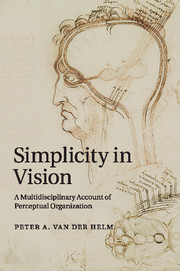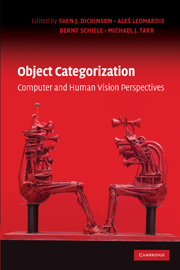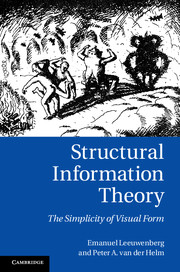Simplicity in Vision
Perceptual organization is the neuro-cognitive process that enables us to perceive scenes as structured wholes consisting of objects arranged in space. Simplicity in Vision explores the intriguing idea that these perceived wholes are given by the simplest organizations of the scenes. Peter A. van der Helm presents a truly multidisciplinary approach to answer fundamental questions such as: Are simplest organizations sufficiently reliable to guide our actions? What is the nature of the regularities that are exploited to arrive at simplest organizations? To account for the high combinatorial capacity and speed of the perceptual organization process, he proposes transparallel processing by hyperstrings. This special form of distributed processing not only gives classical computers the extraordinary computing power that seemed reserved for quantum computers, but also explains how neuronal synchronization relates to flexible self-organizing cognitive architecture in between the relatively rigid level of neurons and the still elusive level of consciousness.
- A coherent account of fundamental issues in human perceptual organization which provides an in-depth understanding of human representation and processing of visual information
- Features a unique mathematical characterization of visual regularity, which underlies empirically supported models of human symmetry perception
- Contains a unique form of processing, enabling quantum-like computing by classical computers, and relating to neuronal synchronization in the brain
Reviews & endorsements
'Van der Helm's book takes us on from the highly influential work of David Marr and his colleagues. Simplicity in Vision is deep but lucid: an important book.' Dr Ian Gordon, Honorary Research Fellow, University of Exeter
'… the three parts of the book provide a coherent and deep underpinning of the role of simplicity in vision.' Johan Wagemans, Perception
Product details
December 2015Paperback
9781316502839
430 pages
228 × 152 × 24 mm
0.37kg
115 b/w illus. 12 tables
Available
Table of Contents
- Prologue: levels of vision, description, and evaluation
- Part I. The Theoretical Cycle:
- 1. Visual information processing
- 2. Veridicality by simplicity
- Part II. The Empirical Cycle:
- 3. Transparent holographic regularity
- 4. Symmetry perception
- Part III. The Tractability Cycle:
- 5. Transparallel processing
- 6. Cognition by synchronization
- Epilogue: towards a Gestalt of perceptual organization.









